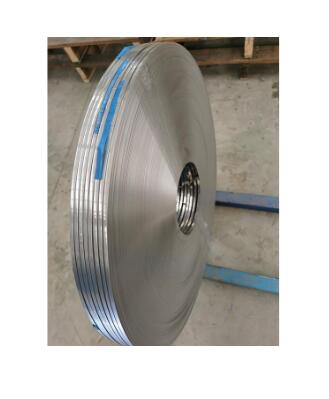Exploring Surface Finishes: Options for Enhancing 410 Stainless Steel Strip
2024-04-01
In the realm of stainless steel, surface finishes play a crucial role not only in aesthetics but also in functionality and performance. When it comes to 410 stainless steel strip, the surface finish can significantly impact its appearance, corrosion resistance, and suitability for specific applications. In this blog, we'll delve into the various surface finishes available for 410 stainless steel strip, highlighting their characteristics and applications to provide insights into selecting the ideal finish for diverse needs.
1. Bright Annealed (BA) Finish
The bright annealed (BA) finish is characterized by a reflective, mirror-like surface that is achieved through annealing in a controlled atmosphere. This finish enhances the aesthetic appeal of 410 stainless steel strip, making it suitable for decorative applications such as architectural elements, automotive trim, and consumer products. The smooth, polished surface of the BA finish also offers improved corrosion resistance.
2. No. 1 Finish
The No. 1 finish, also known as hot rolled annealed and pickled (HRAP), features a coarse, unpolished surface with a matte appearance. This finish is produced by hot rolling followed by annealing and pickling to remove scale and oxide layers. The No. 1 finish is commonly used in industrial applications where appearance is less critical, such as structural components, industrial equipment, and machinery.
3. 2B Finish
The 2B finish is a smooth, semi-reflective surface finish characterized by a uniform, non-directional grain pattern. It is achieved by cold rolling, annealing, and pickling, followed by a final light cold rolling pass to obtain the desired finish. The 2B finish offers good corrosion resistance and is suitable for a wide range of applications, including kitchen equipment, appliances, and architectural finishes.
4. No. 2D Finish
The No. 2D finish, also known as a cold rolled finish, features a dull, matte appearance with a slightly rough texture. It is produced by cold rolling followed by annealing and pickling to remove surface defects and scale. The No. 2D finish is commonly used in applications requiring a smooth, uniform surface finish, such as automotive trim, signage, and decorative panels.
5. No. 3 Finish
The No. 3 finish, also known as a ground finish, is achieved by grinding the surface of the stainless steel strip with abrasive belts to remove surface imperfections and obtain a uniform, matte appearance. This finish is suitable for applications requiring a smooth, flat surface finish, such as conveyor systems, architectural elements, and food processing equipment.
6. No. 4 Finish
The No. 4 finish, also known as a brushed or satin finish, features a fine, linear grain pattern achieved by brushing the surface with abrasive belts. This finish offers a modern, contemporary appearance while providing good corrosion resistance and hiding surface imperfections. The No. 4 finish is commonly used in architectural, automotive, and decorative applications.
Conclusion
In conclusion, the choice of surface finish for 410 stainless steel strip depends on the desired aesthetics, functionality, and application requirements. Whether seeking a reflective, mirror-like finish for decorative purposes or a matte, uniform finish for industrial applications, there are various options available to meet diverse needs. By understanding the characteristics and applications of each surface finish, manufacturers and designers can select the ideal finish to enhance the performance and appearance of 410 stainless steel strip in their specific applications.



